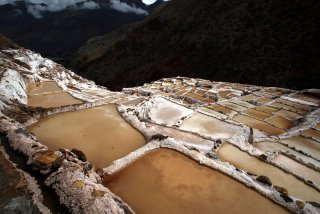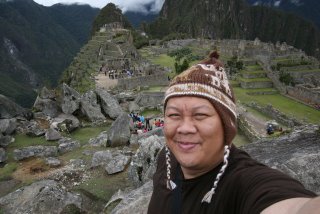I have been playing with pinhole cameras for the past 2 years or so and recently have been building my own out of wood with help from my friend, Ryan.
Pinhole cameras are really easy. You basically need a light tight container which can be practically anything, a thin metal sheet (the pinhole), and some mechanism to control light coming in (the shutter). Of course how far you take the camera is up to you and sky's the limit.
The one of the most common ones you will see and read about are the
oatmeal box pinholes. It's simple basic and easy. Pinhole cameras come in all shapes and forms. I have read about people who use their mouths and fist as the pinhole cameras as well as using buses and buildings. Unlimited possibilities.
You can also buy beautiful and elaborate pinholes too.
Zero Image makes some gorgeous pinholes that take amazing images. I own their Zero Image 69 which takes 120 roll film. It can adjust it's mask to take 6x4.5, 6x6, 6x7, 6x9 sized images.
I made a short documentation of how we built my camera:
The box is pretty simple. It has a face plate and four sides surrounding it leaving the back opened for the film loader to attach to. Ryan is the handyman between the two of us and you see him here cutting up the wood for the camera. I decided to use poplar wood because I really like the patterns that the wood could have. In this piece of wood, there are beautiful purple stripes running through it.
We added a tripod mount to the camera on two of the four sides. You can see Ryan drilling a depression for the hardware to go into.
Once all the pieces are cut they are put together with wood glue and nails then clamped together to dry.
I used plastic wood to seal the the gaps in between the wood and to cover up the nail holes.
To further insure the that the box is light tight we used silicon caulk to seal off all the corner on the inside of the box.
A few coats of clear lacquer is then applied to the outside of the box. This helps prevent any water damage that will cause the box to warp and possibly create a light leak. It also makes it look great!
The inside of the box is sprayed with a matte black paint to prevent light to bounce inside the box and create unwanted effects.
There are many different ways to put a shutter on your camera. On my previous versions of this camera I used a simple flap made of cardboard and tape. We decided to go upscale and recycle an old shutter. Not only does it look great but it allows me to use a cable release which means a more stable shot. The pinhole is attached to the inside of the shutter.
Velcro was added to attach the film holders to the box. The camera was build to also take polaroid film backs.
So here it is! The finished product!
This is an image from a older version of the camera.
Check out Ryan's blog on this:




































